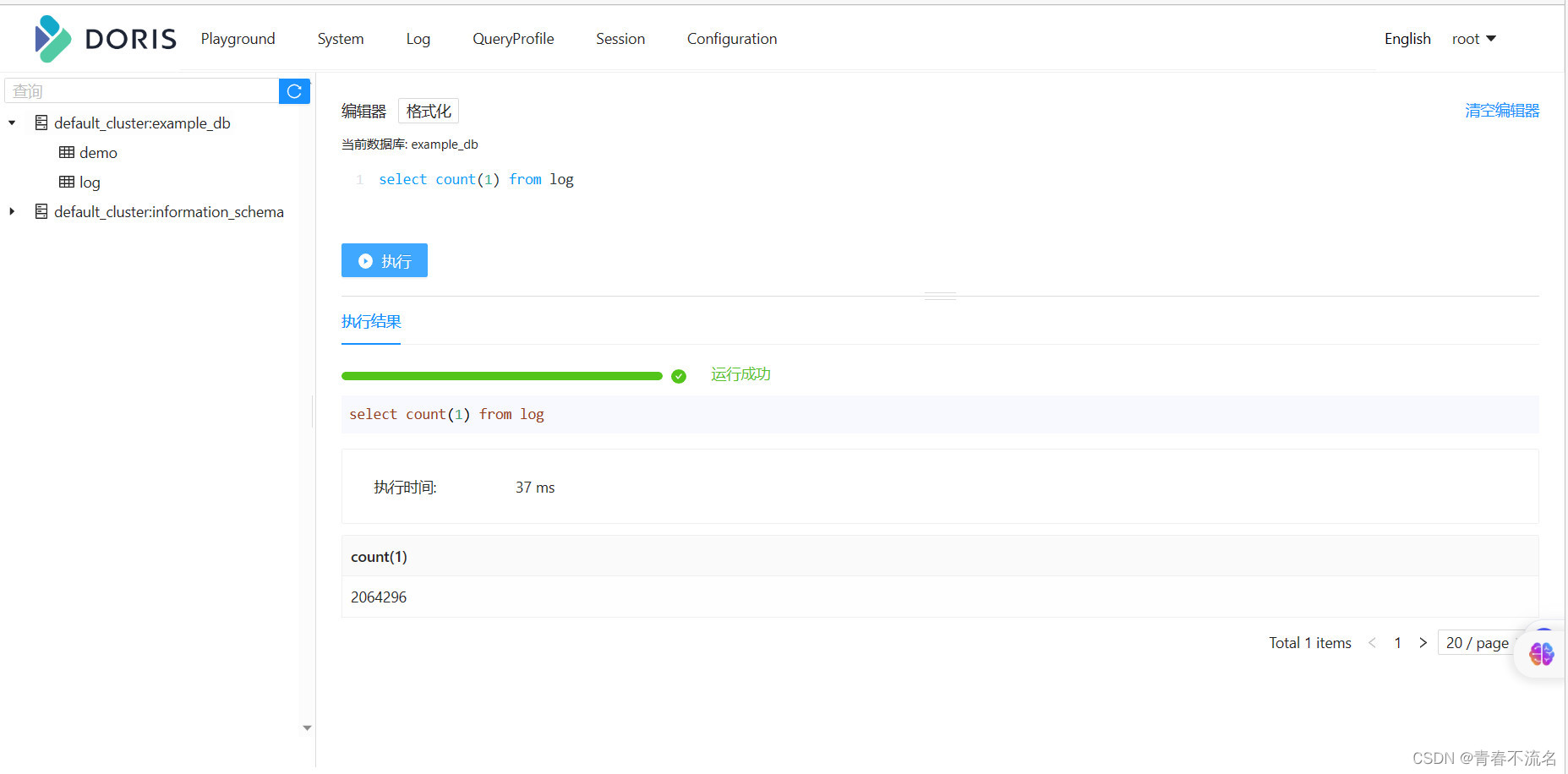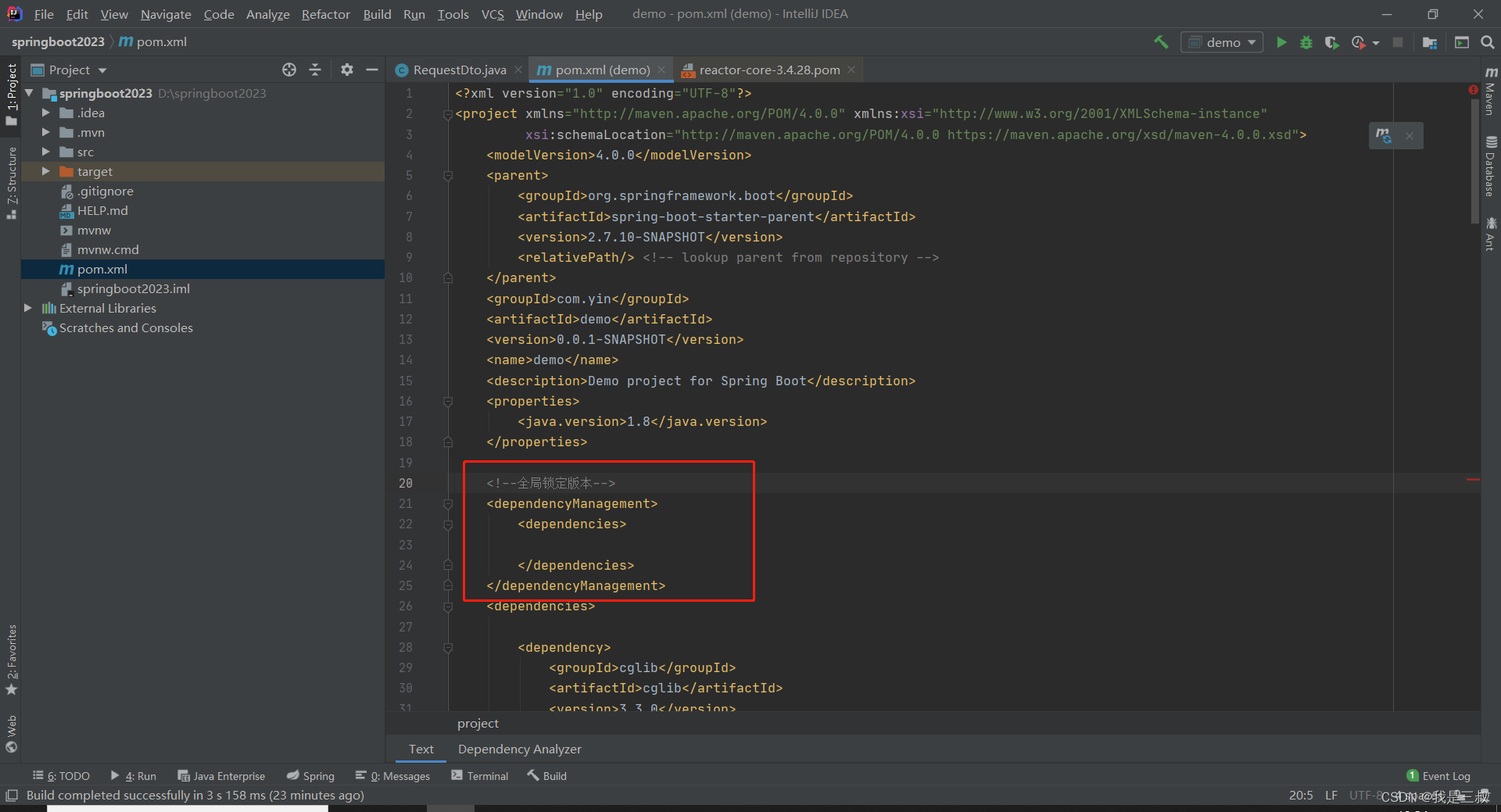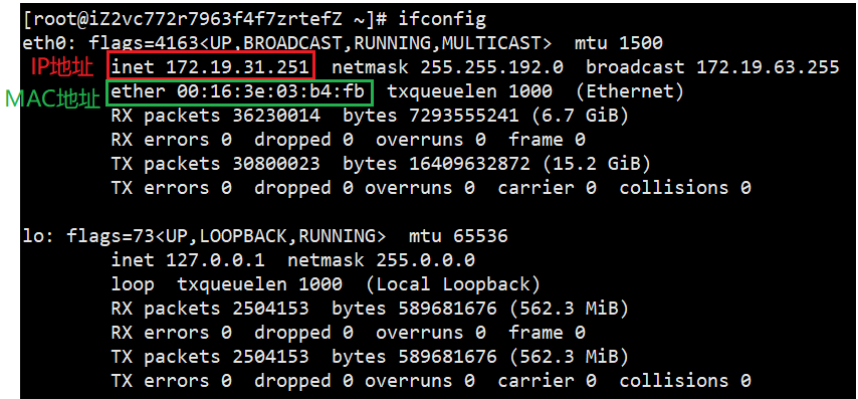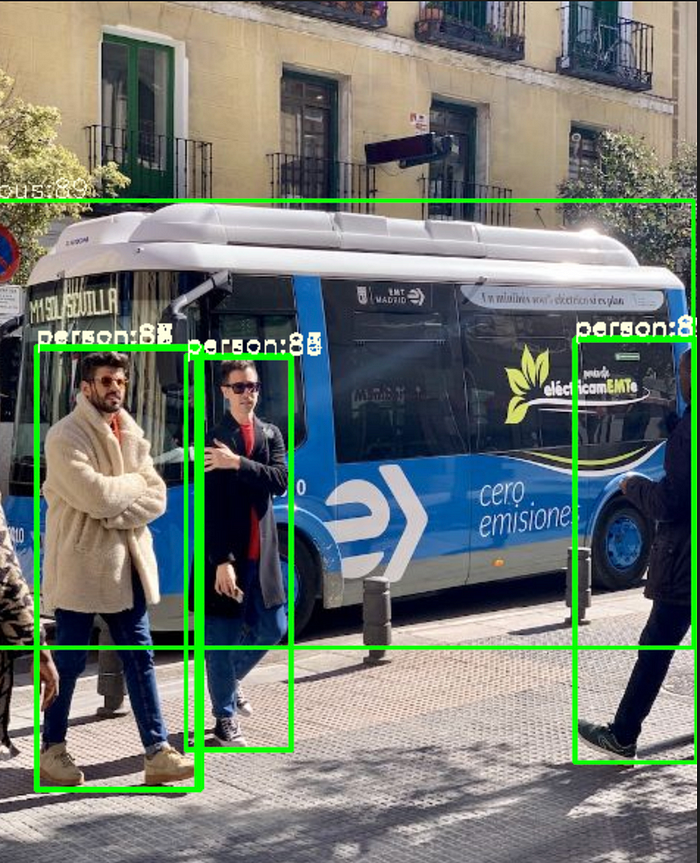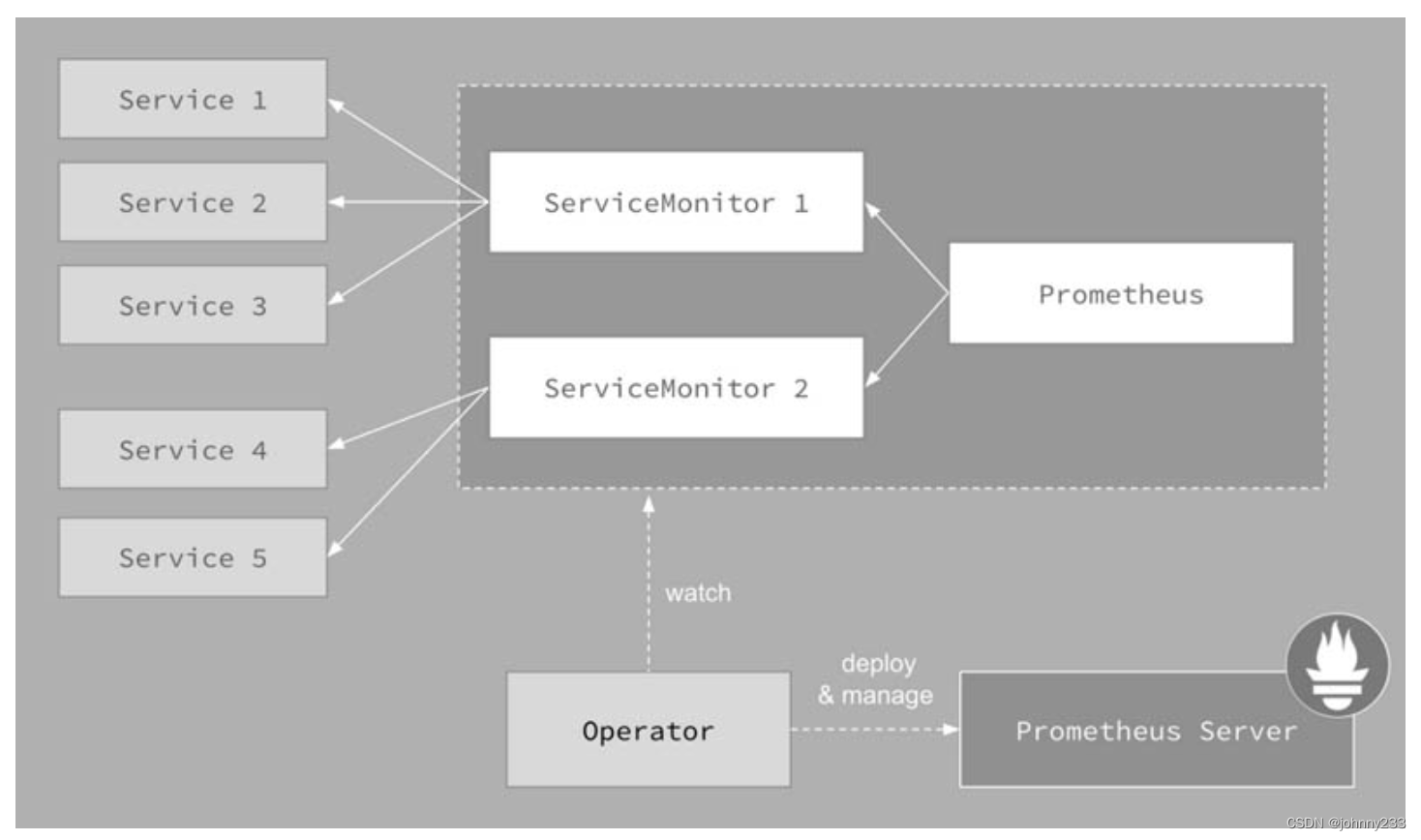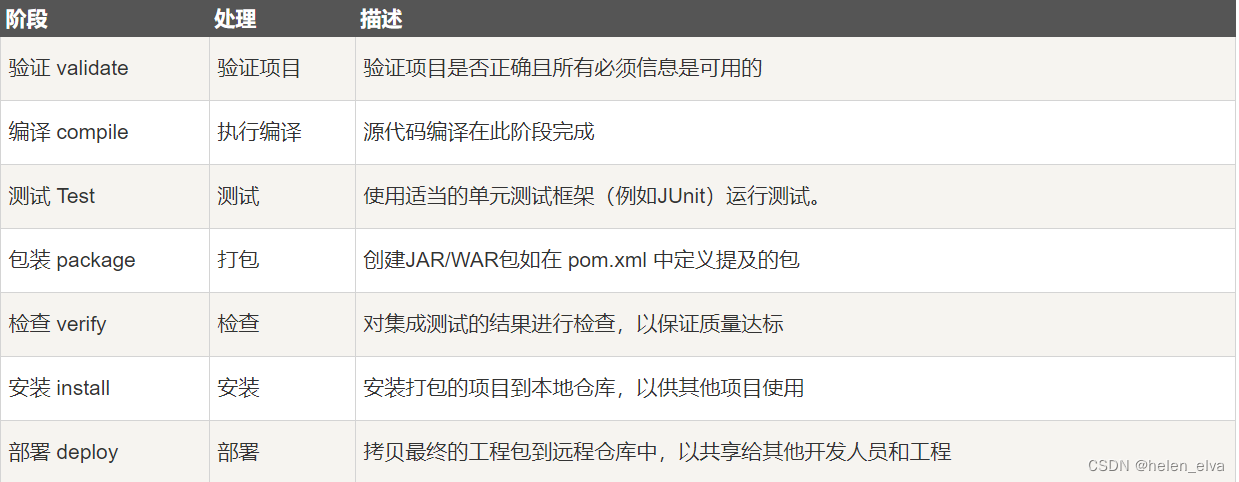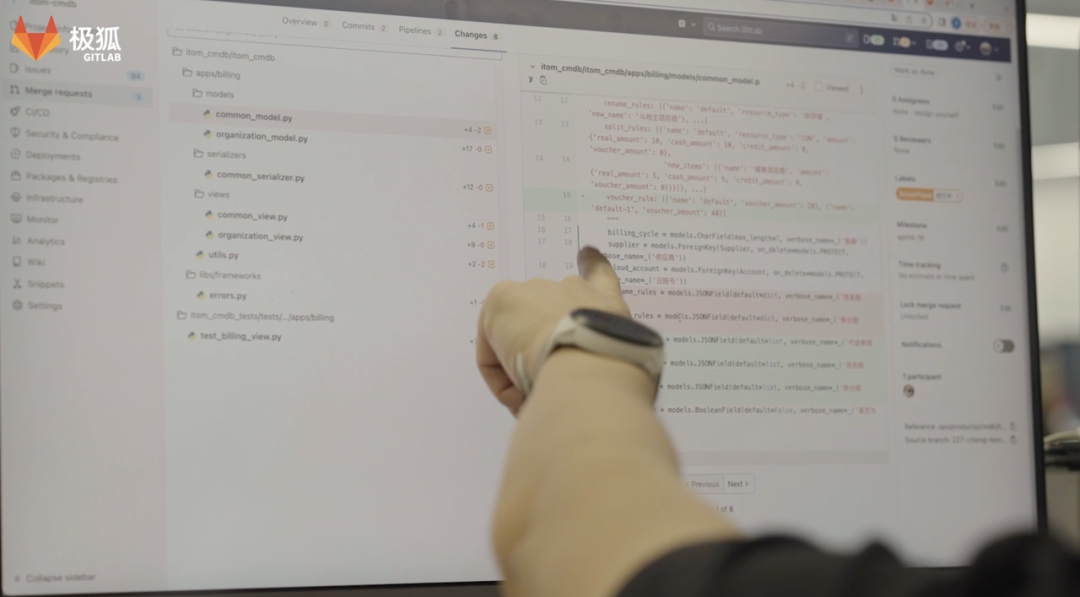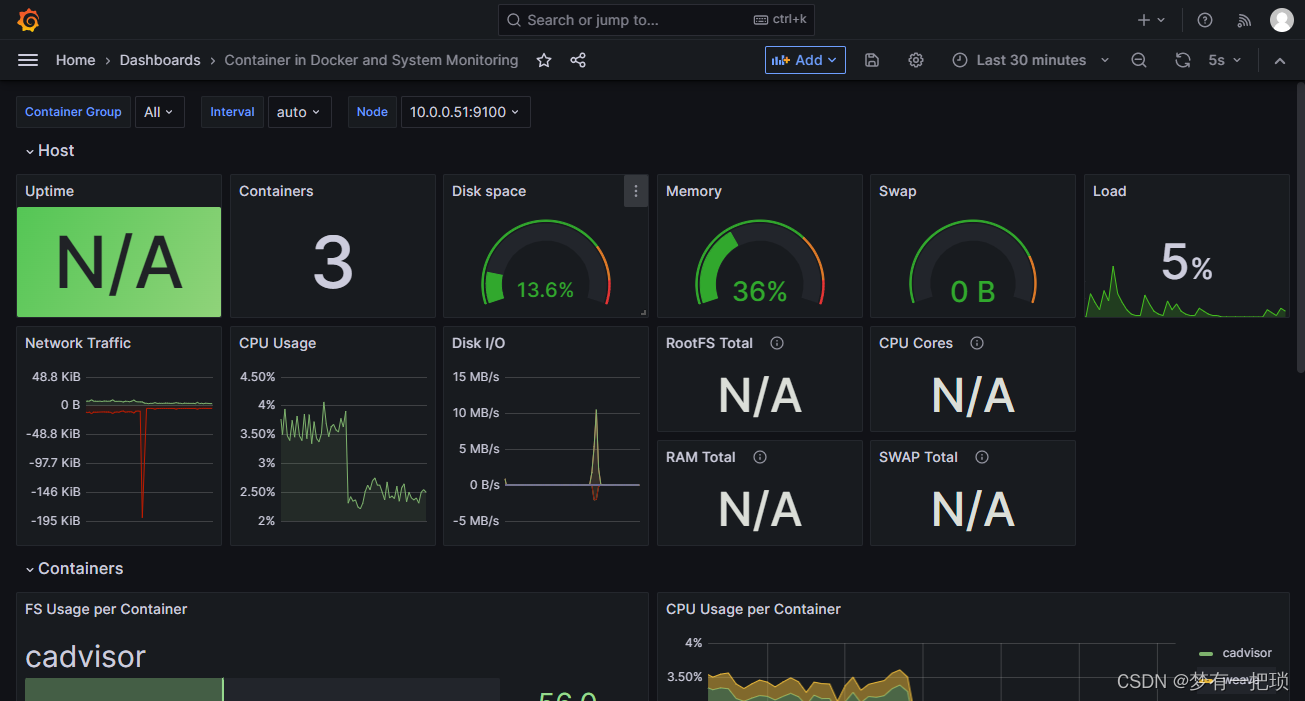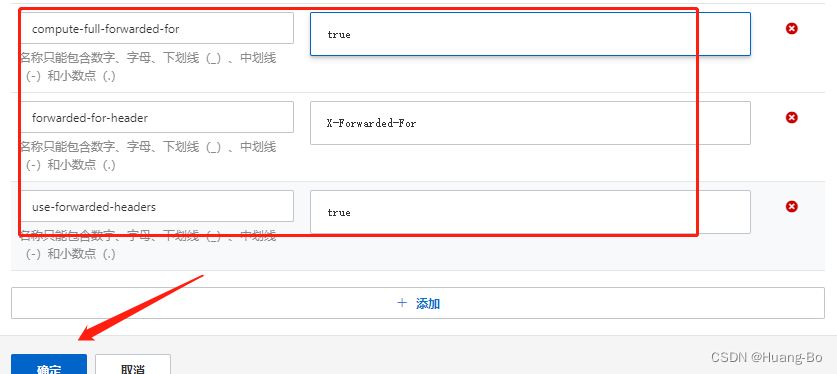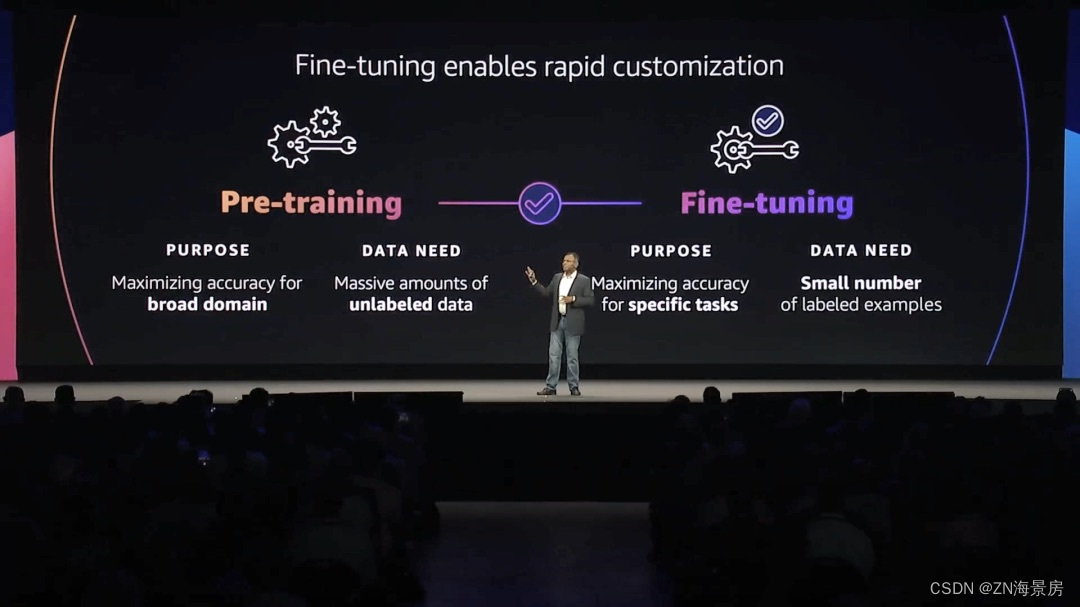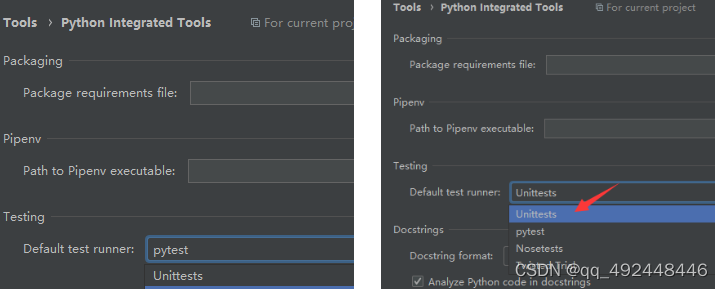目录
一、例子说明
1.1、概述
1.1、所需环境
1.2、执行流程
二、部署环境
2.1、中间件部署
2.1.1部署kakfa
2.1.1.1 上传解压kafka安装包
2.1.1.2 修改zookeeper.properties
2.1.1.3 修改server.properties
2.1.1.3 启动kafka
2.1.2、部署flink
2.1.2.1 上传解压flink安装包
2.1.2.1 修改flink配置
2.1.2.3 flink单节点启动与停止命令
2.1.3、部署doris
2.1.3.1 下载安装包并上传服务器
2.1.3.2 配置doris fe(前端)
2.1.3.3 启动doris fe(前端)
2.1.3.4 配置doris be(后端)
2.1.3.5 doris启动 be(后端)
2.1.3.5 doris启动成功验证
2.1.3.6 doris的be在fe上注册
2.1.3.6 通过doris的fe的Web UI页面创建数据库表
2.1.4、部署spring-boot的syslog-kafka-es-avro
2.1.4.1、syslog-kafka-es-avro基于netty已UDP方式监听syslog
2.1.4.2、syslog-kafka-es-avro已avro格式保存数据到kafka
2.1.5、部署spring-boot的flink-do-doris
2.1.5.1、flink-do-doris主类
三、效果验证
3.1、发送syslog日志,syslog-kafka-es-avro监听处理,存储到kafka
3.2 、查看flink消费kafka
3.3、 在doris上查看入库详情
一、例子说明
1.1、概述
这是个例子,将输入写入kafka,flink消费kafka,并实时写入doris。
1.1、所需环境
| 软件 | 版本 | 备注 | |
| kafka_2.12-3.5.0 | kafka_2.12-3.5.0 | 使用自带的zookeeper | |
| flink-1.17.1 | flink-1.17.1 | ||
| jdk | 1.8.0_202 | ||
| doris | 1.2.6 ( Stable ) | ||
spring-boot | 2.1.17.RELEASE | syslog-kafka-es-avro | |
| spring-boot | 2.4.5 | flink-do-doris | |
flink-doris-connector-1.17 | 1.4.0 | ||
| elasticsearch | 7.6.2 | ||
| 基础目录 | /home | ||
| 服务器 | 10.10.10.99 | centos 7.x |
1.2、执行流程
①、工具发送数据
②、spring-boot基于netty开启某端口监听,接收发送的消息内容,进行数据清洗、标准化
③、kafka product组件接收上一步产生的数据,已avro格式保存到kafka某topic上。
④、flink实时消费kafka某topic,以流的方式进行处理,输出源设置为doris
⑤、终端数据可在doris的fe页面上实时查询。
二、部署环境
2.1、中间件部署
2.1.1部署kakfa
2.1.1.1 上传解压kafka安装包
将安装包kafka_2.12-3.5.0.tar.gz上传到/home目录
tar -zxvf kafka_2.12-3.5.0.tar.gz
mv kafka_2.12-3.5.0 kafka
2.1.1.2 修改zookeeper.properties
路径:/home/kafka/config/zookeeper.properties
dataDir=/home/kafka/zookeeper
clientPort=2181
maxClientCnxns=0
admin.enableServer=false
# admin.serverPort=8080
2.1.1.3 修改server.properties
路径:/home/kafka/config/server.properties
# Licensed to the Apache Software Foundation (ASF) under one or more
# contributor license agreements. See the NOTICE file distributed with
# this work for additional information regarding copyright ownership.
# The ASF licenses this file to You under the Apache License, Version 2.0
# (the "License"); you may not use this file except in compliance with
# the License. You may obtain a copy of the License at
#
# http://www.apache.org/licenses/LICENSE-2.0
#
# Unless required by applicable law or agreed to in writing, software
# distributed under the License is distributed on an "AS IS" BASIS,
# WITHOUT WARRANTIES OR CONDITIONS OF ANY KIND, either express or implied.
# See the License for the specific language governing permissions and
# limitations under the License.#
# This configuration file is intended for use in ZK-based mode, where Apache ZooKeeper is required.
# See kafka.server.KafkaConfig for additional details and defaults
############################## Server Basics #############################
# The id of the broker. This must be set to a unique integer for each broker.
broker.id=0############################# Socket Server Settings #############################
# The address the socket server listens on. If not configured, the host name will be equal to the value of
# java.net.InetAddress.getCanonicalHostName(), with PLAINTEXT listener name, and port 9092.
# FORMAT:
# listeners = listener_name://host_name:port
# EXAMPLE:
# listeners = PLAINTEXT://your.host.name:9092
listeners=PLAINTEXT://:9092# Listener name, hostname and port the broker will advertise to clients.
# If not set, it uses the value for "listeners".
advertised.listeners=PLAINTEXT://10.10.10.99:9092# Maps listener names to security protocols, the default is for them to be the same. See the config documentation for more details
#listener.security.protocol.map=PLAINTEXT:PLAINTEXT,SSL:SSL,SASL_PLAINTEXT:SASL_PLAINTEXT,SASL_SSL:SASL_SSL# The number of threads that the server uses for receiving requests from the network and sending responses to the network
num.network.threads=3# The number of threads that the server uses for processing requests, which may include disk I/O
num.io.threads=8# The send buffer (SO_SNDBUF) used by the socket server
socket.send.buffer.bytes=102400# The receive buffer (SO_RCVBUF) used by the socket server
socket.receive.buffer.bytes=102400# The maximum size of a request that the socket server will accept (protection against OOM)
socket.request.max.bytes=104857600
############################# Log Basics ############################## A comma separated list of directories under which to store log files
log.dirs=/home/kafka/kafka-logs# The default number of log partitions per topic. More partitions allow greater
# parallelism for consumption, but this will also result in more files across
# the brokers.
num.partitions=1# The number of threads per data directory to be used for log recovery at startup and flushing at shutdown.
# This value is recommended to be increased for installations with data dirs located in RAID array.
num.recovery.threads.per.data.dir=1############################# Internal Topic Settings #############################
# The replication factor for the group metadata internal topics "__consumer_offsets" and "__transaction_state"
# For anything other than development testing, a value greater than 1 is recommended to ensure availability such as 3.
offsets.topic.replication.factor=1
transaction.state.log.replication.factor=1
transaction.state.log.min.isr=1############################# Log Flush Policy #############################
# Messages are immediately written to the filesystem but by default we only fsync() to sync
# the OS cache lazily. The following configurations control the flush of data to disk.
# There are a few important trade-offs here:
# 1. Durability: Unflushed data may be lost if you are not using replication.
# 2. Latency: Very large flush intervals may lead to latency spikes when the flush does occur as there will be a lot of data to flush.
# 3. Throughput: The flush is generally the most expensive operation, and a small flush interval may lead to excessive seeks.
# The settings below allow one to configure the flush policy to flush data after a period of time or
# every N messages (or both). This can be done globally and overridden on a per-topic basis.# The number of messages to accept before forcing a flush of data to disk
log.flush.interval.messages=10000# The maximum amount of time a message can sit in a log before we force a flush
log.flush.interval.ms=1000############################# Log Retention Policy #############################
# The following configurations control the disposal of log segments. The policy can
# be set to delete segments after a period of time, or after a given size has accumulated.
# A segment will be deleted whenever *either* of these criteria are met. Deletion always happens
# from the end of the log.# The minimum age of a log file to be eligible for deletion due to age
log.retention.hours=168# A size-based retention policy for logs. Segments are pruned from the log unless the remaining
# segments drop below log.retention.bytes. Functions independently of log.retention.hours.
#log.retention.bytes=1073741824# The maximum size of a log segment file. When this size is reached a new log segment will be created.
#log.segment.bytes=1073741824# The interval at which log segments are checked to see if they can be deleted according
# to the retention policies
log.retention.check.interval.ms=300000############################# Zookeeper #############################
# Zookeeper connection string (see zookeeper docs for details).
# This is a comma separated host:port pairs, each corresponding to a zk
# server. e.g. "127.0.0.1:3000,127.0.0.1:3001,127.0.0.1:3002".
# You can also append an optional chroot string to the urls to specify the
# root directory for all kafka znodes.
zookeeper.connect=localhost:2181# Timeout in ms for connecting to zookeeper
zookeeper.connection.timeout.ms=18000
############################# Group Coordinator Settings ############################## The following configuration specifies the time, in milliseconds, that the GroupCoordinator will delay the initial consumer rebalance.
# The rebalance will be further delayed by the value of group.initial.rebalance.delay.ms as new members join the group, up to a maximum of max.poll.interval.ms.
# The default value for this is 3 seconds.
# We override this to 0 here as it makes for a better out-of-the-box experience for development and testing.
# However, in production environments the default value of 3 seconds is more suitable as this will help to avoid unnecessary, and potentially expensive, rebalances during application startup.
group.initial.rebalance.delay.ms=0
2.1.1.3 启动kafka
①、先启动kafka自带的zookeeper
nohup /home/kafka/bin/zookeeper-server-start.sh /home/kafka/config/zookeeper.properties 2>&1 &
验证启动情况ps -ef | grep zookeeper
②启动kafka
/home/kafka/bin/kafka-server-start.sh -daemon /home/kafka/config/server.properties
验证启动情况
etstat -ntulp | grep 9092
或者ps -ef | grep kafka
2.1.2、部署flink
2.1.2.1 上传解压flink安装包
下载地址https://dlcdn.apache.org/flink/flink-1.17.1/flink-1.17.1-bin-scala_2.12.tgz
下载完成后将flink-1.17.1-bin-scala_2.12.tgz上传到/home目录下,解压并重命名为flink
2.1.2.1 修改flink配置
配置文件路径/home/flink/conf/flink-conf.yaml
################################################################################
# Licensed to the Apache Software Foundation (ASF) under one
# or more contributor license agreements. See the NOTICE file
# distributed with this work for additional information
# regarding copyright ownership. The ASF licenses this file
# to you under the Apache License, Version 2.0 (the
# "License"); you may not use this file except in compliance
# with the License. You may obtain a copy of the License at
#
# http://www.apache.org/licenses/LICENSE-2.0
#
# Unless required by applicable law or agreed to in writing, software
# distributed under the License is distributed on an "AS IS" BASIS,
# WITHOUT WARRANTIES OR CONDITIONS OF ANY KIND, either express or implied.
# See the License for the specific language governing permissions and
# limitations under the License.
################################################################################
#==============================================================================
# Common
#==============================================================================# The external address of the host on which the JobManager runs and can be
# reached by the TaskManagers and any clients which want to connect. This setting
# is only used in Standalone mode and may be overwritten on the JobManager side
# by specifying the --host <hostname> parameter of the bin/jobmanager.sh executable.
# In high availability mode, if you use the bin/start-cluster.sh script and setup
# the conf/masters file, this will be taken care of automatically. Yarn
# automatically configure the host name based on the hostname of the node where the
# JobManager runs.jobmanager.rpc.address: localhost
# The RPC port where the JobManager is reachable.
jobmanager.rpc.port: 6123
# The host interface the JobManager will bind to. By default, this is localhost, and will prevent
# the JobManager from communicating outside the machine/container it is running on.
# On YARN this setting will be ignored if it is set to 'localhost', defaulting to 0.0.0.0.
# On Kubernetes this setting will be ignored, defaulting to 0.0.0.0.
#
# To enable this, set the bind-host address to one that has access to an outside facing network
# interface, such as 0.0.0.0.jobmanager.bind-host: 0.0.0.0
# The total process memory size for the JobManager.
#
# Note this accounts for all memory usage within the JobManager process, including JVM metaspace and other overhead.jobmanager.memory.process.size: 1600m
# The host interface the TaskManager will bind to. By default, this is localhost, and will prevent
# the TaskManager from communicating outside the machine/container it is running on.
# On YARN this setting will be ignored if it is set to 'localhost', defaulting to 0.0.0.0.
# On Kubernetes this setting will be ignored, defaulting to 0.0.0.0.
#
# To enable this, set the bind-host address to one that has access to an outside facing network
# interface, such as 0.0.0.0.taskmanager.bind-host: 0.0.0.0
# The address of the host on which the TaskManager runs and can be reached by the JobManager and
# other TaskManagers. If not specified, the TaskManager will try different strategies to identify
# the address.
#
# Note this address needs to be reachable by the JobManager and forward traffic to one of
# the interfaces the TaskManager is bound to (see 'taskmanager.bind-host').
#
# Note also that unless all TaskManagers are running on the same machine, this address needs to be
# configured separately for each TaskManager.taskmanager.host: localhost
# The total process memory size for the TaskManager.
#
# Note this accounts for all memory usage within the TaskManager process, including JVM metaspace and other overhead.taskmanager.memory.process.size: 1728m
# To exclude JVM metaspace and overhead, please, use total Flink memory size instead of 'taskmanager.memory.process.size'.
# It is not recommended to set both 'taskmanager.memory.process.size' and Flink memory.
#
# taskmanager.memory.flink.size: 1280m# The number of task slots that each TaskManager offers. Each slot runs one parallel pipeline.
taskmanager.numberOfTaskSlots: 1
# The parallelism used for programs that did not specify and other parallelism.
parallelism.default: 1
# The default file system scheme and authority.
#
# By default file paths without scheme are interpreted relative to the local
# root file system 'file:///'. Use this to override the default and interpret
# relative paths relative to a different file system,
# for example 'hdfs://mynamenode:12345'
#
# fs.default-scheme#==============================================================================
# High Availability
#==============================================================================# The high-availability mode. Possible options are 'NONE' or 'zookeeper'.
#
# high-availability.type: zookeeper# The path where metadata for master recovery is persisted. While ZooKeeper stores
# the small ground truth for checkpoint and leader election, this location stores
# the larger objects, like persisted dataflow graphs.
#
# Must be a durable file system that is accessible from all nodes
# (like HDFS, S3, Ceph, nfs, ...)
#
# high-availability.storageDir: hdfs:///flink/ha/# The list of ZooKeeper quorum peers that coordinate the high-availability
# setup. This must be a list of the form:
# "host1:clientPort,host2:clientPort,..." (default clientPort: 2181)
#
# high-availability.zookeeper.quorum: localhost:2181
# ACL options are based on https://zookeeper.apache.org/doc/r3.1.2/zookeeperProgrammers.html#sc_BuiltinACLSchemes
# It can be either "creator" (ZOO_CREATE_ALL_ACL) or "open" (ZOO_OPEN_ACL_UNSAFE)
# The default value is "open" and it can be changed to "creator" if ZK security is enabled
#
# high-availability.zookeeper.client.acl: open#==============================================================================
# Fault tolerance and checkpointing
#==============================================================================# The backend that will be used to store operator state checkpoints if
# checkpointing is enabled. Checkpointing is enabled when execution.checkpointing.interval > 0.
#
# Execution checkpointing related parameters. Please refer to CheckpointConfig and ExecutionCheckpointingOptions for more details.
#
# execution.checkpointing.interval: 3min
# execution.checkpointing.externalized-checkpoint-retention: [DELETE_ON_CANCELLATION, RETAIN_ON_CANCELLATION]
# execution.checkpointing.max-concurrent-checkpoints: 1
# execution.checkpointing.min-pause: 0
# execution.checkpointing.mode: [EXACTLY_ONCE, AT_LEAST_ONCE]
# execution.checkpointing.timeout: 10min
# execution.checkpointing.tolerable-failed-checkpoints: 0
# execution.checkpointing.unaligned: false
#
# Supported backends are 'hashmap', 'rocksdb', or the
# <class-name-of-factory>.
#
# state.backend.type: hashmap# Directory for checkpoints filesystem, when using any of the default bundled
# state backends.
#
# state.checkpoints.dir: hdfs://namenode-host:port/flink-checkpoints# Default target directory for savepoints, optional.
#
# state.savepoints.dir: hdfs://namenode-host:port/flink-savepoints# Flag to enable/disable incremental checkpoints for backends that
# support incremental checkpoints (like the RocksDB state backend).
#
# state.backend.incremental: false# The failover strategy, i.e., how the job computation recovers from task failures.
# Only restart tasks that may have been affected by the task failure, which typically includes
# downstream tasks and potentially upstream tasks if their produced data is no longer available for consumption.jobmanager.execution.failover-strategy: region
#==============================================================================
# Rest & web frontend
#==============================================================================# The port to which the REST client connects to. If rest.bind-port has
# not been specified, then the server will bind to this port as well.
#
rest.port: 8081# The address to which the REST client will connect to
#
rest.address: 10.10.10.99# Port range for the REST and web server to bind to.
#
#rest.bind-port: 8080-8090# The address that the REST & web server binds to
# By default, this is localhost, which prevents the REST & web server from
# being able to communicate outside of the machine/container it is running on.
#
# To enable this, set the bind address to one that has access to outside-facing
# network interface, such as 0.0.0.0.
#
rest.bind-address: 0.0.0.0# Flag to specify whether job submission is enabled from the web-based
# runtime monitor. Uncomment to disable.web.submit.enable: true
# Flag to specify whether job cancellation is enabled from the web-based
# runtime monitor. Uncomment to disable.web.cancel.enable: true
#==============================================================================
# Advanced
#==============================================================================# Override the directories for temporary files. If not specified, the
# system-specific Java temporary directory (java.io.tmpdir property) is taken.
#
# For framework setups on Yarn, Flink will automatically pick up the
# containers' temp directories without any need for configuration.
#
# Add a delimited list for multiple directories, using the system directory
# delimiter (colon ':' on unix) or a comma, e.g.:
# /data1/tmp:/data2/tmp:/data3/tmp
#
# Note: Each directory entry is read from and written to by a different I/O
# thread. You can include the same directory multiple times in order to create
# multiple I/O threads against that directory. This is for example relevant for
# high-throughput RAIDs.
#
# io.tmp.dirs: /tmp# The classloading resolve order. Possible values are 'child-first' (Flink's default)
# and 'parent-first' (Java's default).
#
# Child first classloading allows users to use different dependency/library
# versions in their application than those in the classpath. Switching back
# to 'parent-first' may help with debugging dependency issues.
#
# classloader.resolve-order: child-first# The amount of memory going to the network stack. These numbers usually need
# no tuning. Adjusting them may be necessary in case of an "Insufficient number
# of network buffers" error. The default min is 64MB, the default max is 1GB.
#
# taskmanager.memory.network.fraction: 0.1
# taskmanager.memory.network.min: 64mb
# taskmanager.memory.network.max: 1gb#==============================================================================
# Flink Cluster Security Configuration
#==============================================================================# Kerberos authentication for various components - Hadoop, ZooKeeper, and connectors -
# may be enabled in four steps:
# 1. configure the local krb5.conf file
# 2. provide Kerberos credentials (either a keytab or a ticket cache w/ kinit)
# 3. make the credentials available to various JAAS login contexts
# 4. configure the connector to use JAAS/SASL# The below configure how Kerberos credentials are provided. A keytab will be used instead of
# a ticket cache if the keytab path and principal are set.# security.kerberos.login.use-ticket-cache: true
# security.kerberos.login.keytab: /path/to/kerberos/keytab
# security.kerberos.login.principal: flink-user# The configuration below defines which JAAS login contexts
# security.kerberos.login.contexts: Client,KafkaClient
#==============================================================================
# ZK Security Configuration
#==============================================================================# Below configurations are applicable if ZK ensemble is configured for security
# Override below configuration to provide custom ZK service name if configured
# zookeeper.sasl.service-name: zookeeper# The configuration below must match one of the values set in "security.kerberos.login.contexts"
# zookeeper.sasl.login-context-name: Client#==============================================================================
# HistoryServer
#==============================================================================# The HistoryServer is started and stopped via bin/historyserver.sh (start|stop)
# Directory to upload completed jobs to. Add this directory to the list of
# monitored directories of the HistoryServer as well (see below).
#jobmanager.archive.fs.dir: hdfs:///completed-jobs/# The address under which the web-based HistoryServer listens.
#historyserver.web.address: 0.0.0.0# The port under which the web-based HistoryServer listens.
#historyserver.web.port: 8082# Comma separated list of directories to monitor for completed jobs.
#historyserver.archive.fs.dir: hdfs:///completed-jobs/# Interval in milliseconds for refreshing the monitored directories.
#historyserver.archive.fs.refresh-interval: 10000
# jobmanager debug端口
env.java.opts.jobmanager: "-agentlib:jdwp=transport=dt_socket,server=y,suspend=n,address=5006"
# taskmanager debug端口
env.java.opts.taskmanager: "-agentlib:jdwp=transport=dt_socket,server=y,suspend=n,address=5005"
2.1.2.3 flink单节点启动与停止命令
/home/flink/bin/stop-cluster.sh && /home/flink/bin/start-cluster.sh
2.1.3、部署doris
2.1.3.1 下载安装包并上传服务器
官方参考文档地址
快速开始 - Apache Doris
下载地址 Download - Apache Doris
将安装包上传到/home下,解压并重命名为doris
配置
vi /etc/security/limits.conf
* soft nofile 65536
* hard nofile 65536
2.1.3.2 配置doris fe(前端)
配置文件/home/doris/fe/conf/fe.conf
# Licensed to the Apache Software Foundation (ASF) under one
# or more contributor license agreements. See the NOTICE file
# distributed with this work for additional information
# regarding copyright ownership. The ASF licenses this file
# to you under the Apache License, Version 2.0 (the
# "License"); you may not use this file except in compliance
# with the License. You may obtain a copy of the License at
#
# http://www.apache.org/licenses/LICENSE-2.0
#
# Unless required by applicable law or agreed to in writing,
# software distributed under the License is distributed on an
# "AS IS" BASIS, WITHOUT WARRANTIES OR CONDITIONS OF ANY
# KIND, either express or implied. See the License for the
# specific language governing permissions and limitations
# under the License.#####################################################################
## The uppercase properties are read and exported by bin/start_fe.sh.
## To see all Frontend configurations,
## see fe/src/org/apache/doris/common/Config.java
###################################################################### the output dir of stderr and stdout
LOG_DIR = ${DORIS_HOME}/logDATE = `date +%Y%m%d-%H%M%S`
JAVA_OPTS="-Xmx8192m -XX:+UseMembar -XX:SurvivorRatio=8 -XX:MaxTenuringThreshold=7 -XX:+PrintGCDateStamps -XX:+PrintGCDetails -XX:+UseConcMarkSweepGC -XX:+UseParNewGC -XX:+CMSClassUnloadingEnabled -XX:-CMSParallelRemarkEnabled -XX:CMSInitiatingOccupancyFraction=80 -XX:SoftRefLRUPolicyMSPerMB=0 -Xloggc:$DORIS_HOME/log/fe.gc.log.$DATE"# For jdk 9+, this JAVA_OPTS will be used as default JVM options
JAVA_OPTS_FOR_JDK_9="-Xmx8192m -XX:SurvivorRatio=8 -XX:MaxTenuringThreshold=7 -XX:+CMSClassUnloadingEnabled -XX:-CMSParallelRemarkEnabled -XX:CMSInitiatingOccupancyFraction=80 -XX:SoftRefLRUPolicyMSPerMB=0 -Xlog:gc*:$DORIS_HOME/log/fe.gc.log.$DATE:time"##
## the lowercase properties are read by main program.
### INFO, WARN, ERROR, FATAL
sys_log_level = INFO# store metadata, must be created before start FE.
# Default value is ${DORIS_HOME}/doris-meta
meta_dir = ${DORIS_HOME}/doris-meta# Default dirs to put jdbc drivers,default value is ${DORIS_HOME}/jdbc_drivers
jdbc_drivers_dir = ${DORIS_HOME}/jdbc_drivershttp_port = 8030
rpc_port = 9020
query_port = 9030
edit_log_port = 9010
mysql_service_nio_enabled = true# Choose one if there are more than one ip except loopback address.
# Note that there should at most one ip match this list.
# If no ip match this rule, will choose one randomly.
# use CIDR format, e.g. 10.10.10.0/24
# Default value is empty.
priority_networks = 10.10.10.0/24# Advanced configurations
log_roll_size_mb = 1024
sys_log_dir = ${DORIS_HOME}/log
sys_log_roll_num = 10
sys_log_verbose_modules = org.apache.doris
audit_log_dir = ${DORIS_HOME}/log
audit_log_modules = slow_query, query
audit_log_roll_num = 10
meta_delay_toleration_second = 10
qe_max_connection = 1024
max_conn_per_user = 100
qe_query_timeout_second = 300
qe_slow_log_ms = 5000
2.1.3.3 启动doris fe(前端)
/home/doris/fe/bin/start_fe.sh --daemon
2.1.3.4 配置doris be(后端)
配置文件路径/home/doris/be/conf/be.conf
# Licensed to the Apache Software Foundation (ASF) under one
# or more contributor license agreements. See the NOTICE file
# distributed with this work for additional information
# regarding copyright ownership. The ASF licenses this file
# to you under the Apache License, Version 2.0 (the
# "License"); you may not use this file except in compliance
# with the License. You may obtain a copy of the License at
#
# http://www.apache.org/licenses/LICENSE-2.0
#
# Unless required by applicable law or agreed to in writing,
# software distributed under the License is distributed on an
# "AS IS" BASIS, WITHOUT WARRANTIES OR CONDITIONS OF ANY
# KIND, either express or implied. See the License for the
# specific language governing permissions and limitations
# under the License.PPROF_TMPDIR="$DORIS_HOME/log/"
# if JAVA_OPTS is set, it will override the jvm opts for BE jvm.
#JAVA_OPTS="-Xmx8192m -DlogPath=$DORIS_HOME/log/udf-jdbc.log -Djava.compiler=NONE -XX::-CriticalJNINatives"# since 1.2, the JAVA_HOME need to be set to run BE process.
# JAVA_HOME=/path/to/jdk/# INFO, WARNING, ERROR, FATAL
sys_log_level = INFO# ports for admin, web, heartbeat service
be_port = 9060
webserver_port = 8040
heartbeat_service_port = 9050
brpc_port = 8060# Choose one if there are more than one ip except loopback address.
# Note that there should at most one ip match this list.
# If no ip match this rule, will choose one randomly.
# use CIDR format, e.g. 10.10.10.0/24
# Default value is empty.
priority_networks = 10.10.10.0/24# data root path, separate by ';'
# you can specify the storage medium of each root path, HDD or SSD
# you can add capacity limit at the end of each root path, separate by ','
# eg:
# storage_root_path = /home/disk1/doris.HDD,50;/home/disk2/doris.SSD,1;/home/disk2/doris
# /home/disk1/doris.HDD, capacity limit is 50GB, HDD;
# /home/disk2/doris.SSD, capacity limit is 1GB, SSD;
# /home/disk2/doris, capacity limit is disk capacity, HDD(default)
#
# you also can specify the properties by setting '<property>:<value>', separate by ','
# property 'medium' has a higher priority than the extension of path
#
# Default value is ${DORIS_HOME}/storage, you should create it by hand.
storage_root_path = ${DORIS_HOME}/storage# Default dirs to put jdbc drivers,default value is ${DORIS_HOME}/jdbc_drivers
jdbc_drivers_dir = ${DORIS_HOME}/jdbc_drivers# Advanced configurations
# sys_log_dir = ${DORIS_HOME}/log
# sys_log_roll_mode = SIZE-MB-1024
# sys_log_roll_num = 10
# sys_log_verbose_modules = *
# log_buffer_level = -1
# palo_cgroups
2.1.3.5 doris启动 be(后端)
/home/doris/be/bin/start_be.sh --daemon
2.1.3.5 doris启动成功验证
curl http://10.10.10.99:8030/api/bootstrap
curl http://10.10.10.99:8040/api/health执行这两条命令,会输出success信息
2.1.3.6 doris的be在fe上注册
roris兼容mysql协议
因此使用mysql-client执行命令
mysql -h 10.10.10.99 -P 9030 -uroot
ALTER SYSTEM ADD BACKEND "10.10.10.99:9050";最后在重启下be和fe
2.1.3.6 通过doris的fe的Web UI页面创建数据库表
浏览器访问地址
http://10.10.10.99:8030/login
默认用户名是root,默认密码为空
创建测试数据库表
create database example_db;
CREATE TABLE IF NOT EXISTS example_db.demo
(
`destroy_date` DATETIME NOT NULL COMMENT "destroy_date",
`latitude` DECIMAL NOT NULL COMMENT "精度",
`longitude` DECIMAL NOT NULL COMMENT "纬度",
`city` VARCHAR(256) COMMENT "city"
)
DUPLICATE KEY(`destroy_date`, `latitude`, `longitude`)
DISTRIBUTED BY HASH(`city`) BUCKETS 1
PROPERTIES (
"replication_allocation" = "tag.location.default: 1"
);CREATE TABLE IF NOT EXISTS example_db.log
(
`APP` VARCHAR(256) COMMENT "应用",
`VERSION` VARCHAR(256) COMMENT "VERSION",
`APP_PRO` VARCHAR(256) COMMENT "APP_PRO",
`APP_TYPE` VARCHAR(256) COMMENT "APP_TYPE",
`APP_IP` VARCHAR(256) COMMENT "APP_IP",
`MSG` VARCHAR(256) COMMENT "MSG",
`CONTEXT` VARCHAR(256) COMMENT "CONTEXT",
`TAG` VARCHAR(256) COMMENT "TAG",
`TIME` VARCHAR(256) COMMENT "TIME",
`VENDOR` VARCHAR(256) COMMENT "VENDOR",
`VIDEO` VARCHAR(256) COMMENT "VIDEO",
`RESULT` VARCHAR(256) COMMENT "RESULT",
`LEVEL` VARCHAR(256) COMMENT "LEVEL",
`LOG` VARCHAR(256) NOT NULL COMMENT "LOG",
`NAME` VARCHAR(256) COMMENT "NAME",
`MAC` VARCHAR(256) NOT NULL COMMENT "MAC",
`NOTE` VARCHAR(256) NOT NULL COMMENT "NOTE",
`SERVER` VARCHAR(256) NOT NULL COMMENT "SERVER",
`UUID` VARCHAR(256) NOT NULL COMMENT "UUID",
`CREATE_TIME` DATETIME NOT NULL COMMENT "CREATE_TIME"
)
DUPLICATE KEY(`APP`, `VERSION`, `APP_PRO`)
DISTRIBUTED BY HASH(`UUID`) BUCKETS 1
PROPERTIES (
"replication_allocation" = "tag.location.default: 1"
);
2.1.4、部署spring-boot的syslog-kafka-es-avro
配置kafka地址
UDP 端口
直接启动
2.1.4.1、syslog-kafka-es-avro基于netty已UDP方式监听syslog
//表示服务器连接监听线程组,专门接受 accept 新的客户端client 连接
EventLoopGroup group = new NioEventLoopGroup();
try {
//1、创建netty bootstrap 启动类
Bootstrap serverBootstrap = new Bootstrap();
//2、设置boostrap 的eventLoopGroup线程组
serverBootstrap = serverBootstrap.group(group);
//3、设置NIO UDP连接通道
serverBootstrap = serverBootstrap.channel(NioDatagramChannel.class);
//4、设置通道参数 SO_BROADCAST广播形式
serverBootstrap = serverBootstrap.option(ChannelOption.SO_BROADCAST, true);
serverBootstrap = serverBootstrap.option(ChannelOption.SO_RCVBUF, 1024*1024*1000);
//5、设置处理类 装配流水线
serverBootstrap = serverBootstrap.handler(syslogUdpHandler);
//6、绑定server,通过调用sync()方法异步阻塞,直到绑定成功
ChannelFuture channelFuture = serverBootstrap.bind(port).sync();
log.info("started and listened on " + channelFuture.channel().localAddress());
//7、监听通道关闭事件,应用程序会一直等待,直到channel关闭
channelFuture.channel().closeFuture().sync();
} catch (Exception e) {
log.error("初始化异常",e);
} finally {
log.warn("netty udp close!");
//8 关闭EventLoopGroup,
group.shutdownGracefully();
}
2.1.4.2、syslog-kafka-es-avro已avro格式保存数据到kafka
if (event == null || event.size() == 0) {
if (log.isDebugEnabled()) {
log.debug("解析数据为空,不执行kafka数据推送 !");
}
return;
}
if (switchKafkaConfiguration != null && switchKafkaConfiguration.isAvroTest()) {
log.info("发送kafka前,先将数据转换成二进制,通过接口发送测试");
String filePath= "D:\\conf\\kafka\\demo.avro";
try {
AvroProcess avroProcess = AvroProcess.builder(filePath);
byte[] bytes = avroProcess.serialize(event);
String url = "http://127.0.0.1:8080/bin/receive";
HttpBinaryUtil.remoteInvoke(bytes,url);
} catch (IOException e) {
throw new RuntimeException(e);
}
}
else{
if (log.isDebugEnabled()) {
log.debug("数据发送到kafka");
}
sendProcess.innerHandle(event);
}
2.1.5、部署spring-boot的flink-do-doris
压缩成flink-do-doris-jar-with-dependencies.jar
通过10.10.10.99:8081 web ui页面提交jar文件
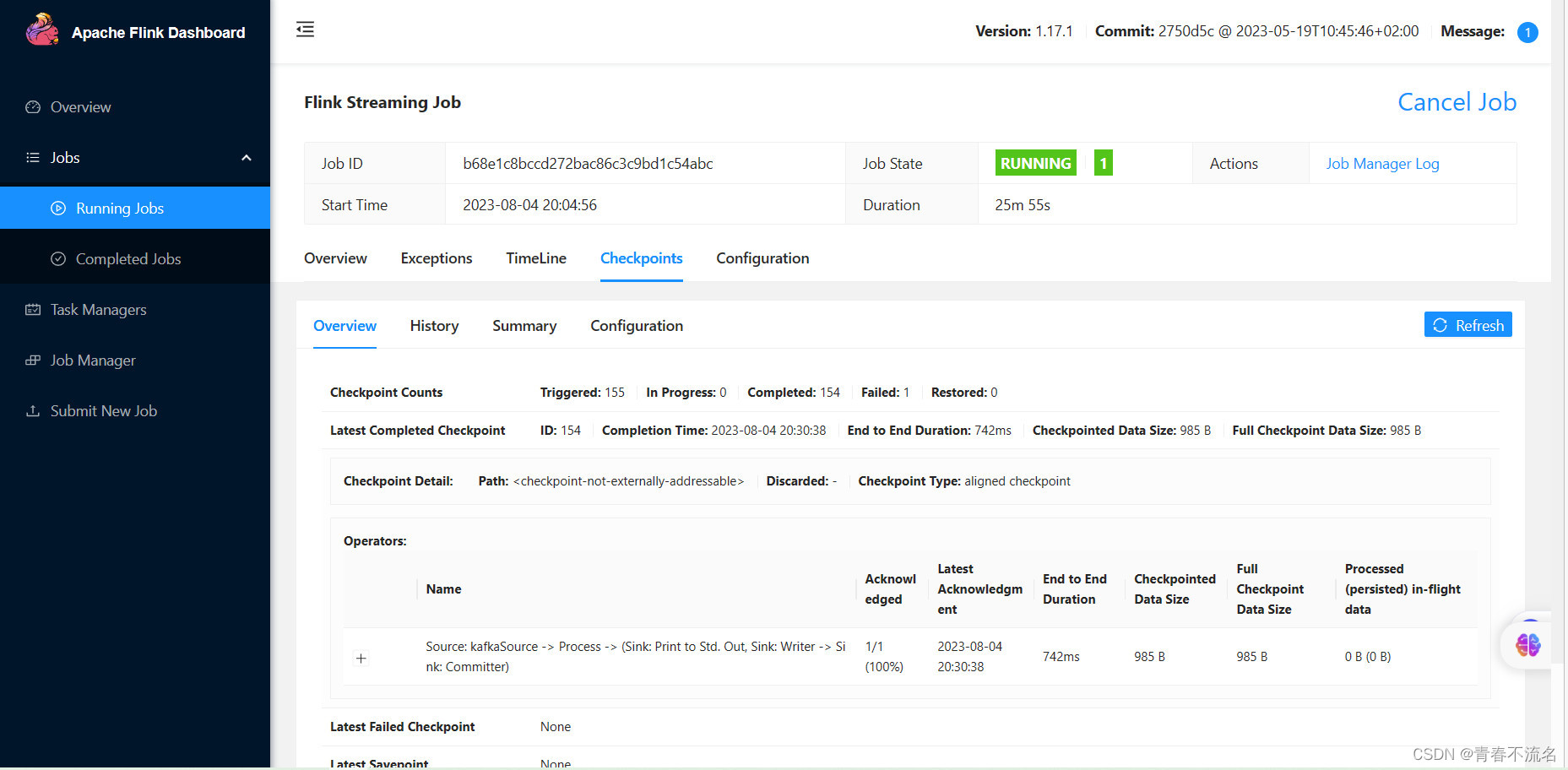
2.1.5.1、flink-do-doris主类
import cn.hutool.core.lang.UUID;
import cn.hutool.json.JSONUtil;
import org.apache.commons.collections.MapUtils;
import org.apache.commons.lang3.StringUtils;
import org.apache.doris.flink.cfg.DorisExecutionOptions;
import org.apache.doris.flink.cfg.DorisOptions;
import org.apache.doris.flink.cfg.DorisReadOptions;
import org.apache.doris.flink.sink.DorisSink;
import org.apache.doris.flink.sink.writer.RowDataSerializer;
import org.apache.flink.api.common.RuntimeExecutionMode;
import org.apache.flink.api.common.eventtime.WatermarkStrategy;
import org.apache.flink.api.common.functions.MapFunction;
import org.apache.flink.connector.kafka.source.KafkaSource;
import org.apache.flink.streaming.api.CheckpointingMode;
import org.apache.flink.streaming.api.datastream.DataStream;
import org.apache.flink.streaming.api.datastream.DataStreamSource;
import org.apache.flink.streaming.api.datastream.SingleOutputStreamOperator;
import org.apache.flink.streaming.api.environment.CheckpointConfig;
import org.apache.flink.streaming.api.environment.StreamExecutionEnvironment;
import org.apache.flink.streaming.api.functions.ProcessFunction;
import org.apache.flink.table.api.DataTypes;
import org.apache.flink.table.data.GenericRowData;
import org.apache.flink.table.data.RowData;
import org.apache.flink.table.data.StringData;
import org.apache.flink.table.data.TimestampData;
import org.apache.flink.table.types.DataType;
import org.apache.flink.util.Collector;
import org.slf4j.Logger;
import org.slf4j.LoggerFactory;
import java.time.LocalDate;
import java.util.Map;
import java.util.Properties;
/**
* @author demo
*/
public class FlinkToDorisApp {
private static final Logger log = LoggerFactory.getLogger(FlinkToDorisApp.class);
private static final String KAFKA_BOOTSTRAP_SERVERS = "10.10.10.99:9092";
private static final String TOPIC = "demo";
private static final String GROUP_ID = "syslog-process-kafka-flink-doris";
private static final String KAFKA_DATASOURCE_NAME = "kafkaSource";
private static final String DORIS_FE_HOST = "10.10.10.99:8030";
//private static final String DORIS_DB_NAME = "example_db.demo";
private static final String DORIS_DB_NAME = "example_db.log";
/**
* doris安装后默认的用户名是root
*/
private static final String DORIS_USERNAME = "root";
/**
* doris安装后默认的是密码是空值
*/
private static final String DORIS_PASSWORD = "";
private static final String schema = "";
private static final String[] fields = {};
public static void main(String[] args) throws Exception {
StreamExecutionEnvironment env = StreamExecutionEnvironment.getExecutionEnvironment();
env.enableCheckpointing(10000);
env.setRuntimeMode(RuntimeExecutionMode.AUTOMATIC);
env.setParallelism(1);
CheckpointConfig checkpointConfig = env.getCheckpointConfig();
checkpointConfig.setCheckpointingMode(CheckpointingMode.AT_LEAST_ONCE);
checkpointConfig.setExternalizedCheckpointCleanup(CheckpointConfig.ExternalizedCheckpointCleanup.DELETE_ON_CANCELLATION);
KafkaSource<String> kafkaSource = KafkaUtils.getKafkaSource(KAFKA_BOOTSTRAP_SERVERS, TOPIC, GROUP_ID, schema);
DataStreamSource<String> kafkaDS = env.fromSource(kafkaSource, WatermarkStrategy.noWatermarks(), KAFKA_DATASOURCE_NAME);
SingleOutputStreamOperator<RowData> jsonDS = kafkaDS.process(new ProcessFunction<String, RowData>() {
@Override
public void processElement(String json, Context context, Collector<RowData> collector) {
try {
if (StringUtils.isNotBlank(json)) {
Map event = JSONUtil.toBean(json, Map.class);
GenericRowData eventData = mapping(event);
if (eventData != null) {
collector.collect(eventData);
}
}
} catch (Exception e) {
throw new RuntimeException(e);
}
}
});
DataStream<RowData> dataStream = jsonDS.forward();
dataStream.print();
DorisSink.Builder<RowData> builder = DorisSink.builder();
DorisOptions.Builder dorisBuilder = DorisOptions.builder();
dorisBuilder.setFenodes(DORIS_FE_HOST)
.setTableIdentifier(DORIS_DB_NAME)
.setUsername(DORIS_USERNAME)
.setPassword(DORIS_PASSWORD);
Properties properties = new Properties();
properties.setProperty("format", "json");
properties.setProperty("read_json_by_line", "true");
DorisExecutionOptions.Builder executionBuilder = DorisExecutionOptions.builder();
executionBuilder.setLabelPrefix("label-doris" + UUID.fastUUID()).setStreamLoadProp(properties);
DataType[] types = {DataTypes.VARCHAR(256),DataTypes.VARCHAR(256),DataTypes.VARCHAR(256),DataTypes.VARCHAR(256),
DataTypes.VARCHAR(256),DataTypes.VARCHAR(256),DataTypes.VARCHAR(256),DataTypes.VARCHAR(256),
DataTypes.VARCHAR(256),DataTypes.VARCHAR(256),DataTypes.VARCHAR(256),DataTypes.VARCHAR(256),
DataTypes.VARCHAR(256),DataTypes.VARCHAR(256),DataTypes.VARCHAR(256),DataTypes.VARCHAR(256),
DataTypes.VARCHAR(256),DataTypes.VARCHAR(256),DataTypes.VARCHAR(256),DataTypes.VARCHAR(256),
DataTypes.VARCHAR(256),DataTypes.VARCHAR(256),DataTypes.VARCHAR(256),DataTypes.VARCHAR(256),
DataTypes.TIMESTAMP()};
builder.setDorisReadOptions(DorisReadOptions.builder().build())
.setDorisExecutionOptions(executionBuilder.build())
.setSerializer(RowDataSerializer.builder()
.setFieldNames(fields)
.setType("json")
.setFieldType(types).build())
.setDorisOptions(dorisBuilder.build());
boolean test = false;
if (test) {
DataStream<RowData> source = env.fromElements("")
.map((MapFunction<String, RowData>) value -> {
GenericRowData genericRowData = new GenericRowData(4);
genericRowData.setField(0, StringData.fromString("beijing"));
genericRowData.setField(1, 116.405419);
genericRowData.setField(2, 39.916927);
genericRowData.setField(3, new Long(LocalDate.now().toEpochDay()).intValue());
return genericRowData;
});
source.sinkTo(builder.build());
}
dataStream.sinkTo(builder.build());
log.info("doris安装后默认的用户名是root,doris安装后默认的密码是空值");
env.execute();
}
private static final int TWO_PER_SECOND = 2;
private static GenericRowData mapping(Map event) {
GenericRowData genericRowData = new GenericRowData(fields.length);
for (int i = 0; i < fields.length - TWO_PER_SECOND; i++) {
genericRowData.setField(i, StringData.fromString(MapUtils.getString(event, fields[i], "")));
}
genericRowData.setField(23, StringData.fromString(UUID.randomUUID().toString()));
genericRowData.setField(24, TimestampData.fromEpochMillis(System.currentTimeMillis()));
return genericRowData;
}
}
三、效果验证
3.1、发送syslog日志,syslog-kafka-es-avro监听处理,存储到kafka
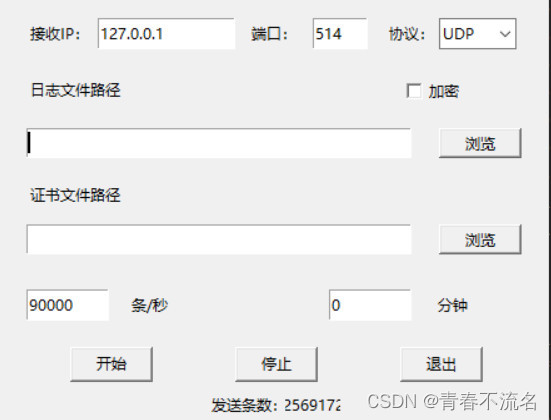
3.2 、查看flink消费kafka

3.3、 在doris上查看入库详情
